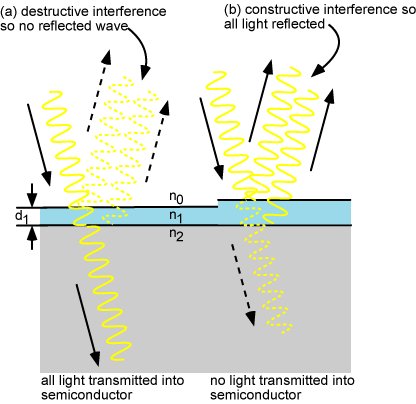
According to ideal theoretical predictions, the IBSC is expected to exhibit extremely high conversion efficiency, >60%, under the maximum concentration and 48.2% under one-sun irradiation 5. This two-step photon up-conversion (TPU) process following the absorption of two below-gap photons produces additional photocurrent without degrading the photovoltage. Upon absorbing another below-gap photon, the electron is further excited into the conduction band (CB).

By absorbing a below-gap photon, an electron transits from the valence band (VB) to the intermediate band (IB). The IBSC includes intermediate states in the bandgap. One promising SC is the intermediate-band SC (IBSC) containing an additional parallel diode connection, which can reduce the transmission loss 5, 6. Many efforts have been made to realize high-efficiency SCs by breaking the conversion limit and several concepts have been proposed to improve the efficiency 3, 4, 5, 6, 7, 8, 9. Below-bandgap photons with energy smaller than the bandgap of SC are not absorbed and do not contribute to create carriers. In particular, the main factors influencing this efficiency limitation are the transmission loss of below-gap photons and the thermalization of photogenerated carriers towards the band edge 2. The conversion efficiency of single-junction SCs is limited to ∼30% of the so-called Shockley–Queisser limit owing to unavoidable losses, such as transmission loss, thermalization loss, Carnot loss, Boltzmann loss and emission loss 1, 2. High-efficiency photovoltaics using n-i-p semiconductor solar cells (SCs) are very promising for generating electrical power by utilizing solar radiation. These results suggest that the two-step photon up-conversion SC has a high potential for implementation in the next-generation high-efficiency SCs. We observe not only a dramatic increase in the additional photocurrent, which exceeds the reported values by approximately two orders of magnitude, but also an increase in the photovoltage. Efficient two-step photon up-conversion is achieved by introducing InAs quantum dots at the hetero-interface. The accumulated electrons at the hetero-interface are pumped upwards into the Al 0.3Ga 0.7As barrier by below-gap photons for GaAs. The below-gap photons for Al 0.3Ga 0.7As excite GaAs and generate electrons at the hetero-interface. Here we propose a two-step photon up-conversion SC with a hetero-interface comprising different bandgaps of Al 0.3Ga 0.7As and GaAs.

The up-conversion of below-gap photons is very promising for generating additional photocurrent. Reducing the transmission loss for below-gap photons is a straightforward way to break the limit of the energy-conversion efficiency of solar cells (SCs).


 0 kommentar(er)
0 kommentar(er)
